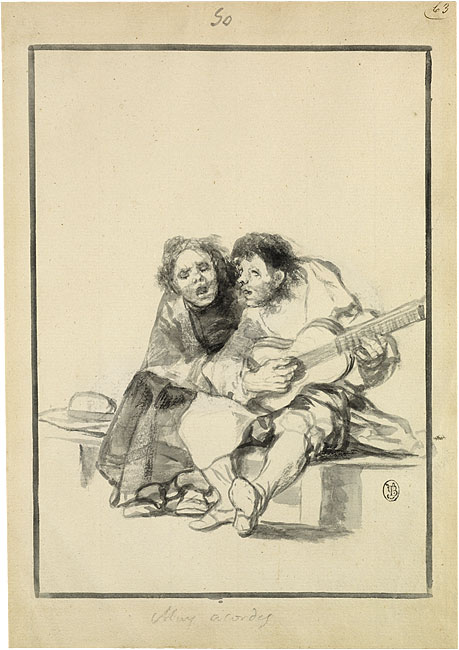
THE MUSIC OF MELANCHOLY
Music played a central role for Goya and his patrons. This sheet, the last known page from his Black Border Album, depicts a blind couple singing a cante jondo, a genre of Andalusian folk music. Following a grave illness in 1793, Goya permanently lost his hearing. The "close harmony" in the caption implies not only the musical accord of voices and guitar but also the compassion with which Goya treated the protagonists, given his own physical impairment. Moody and melancholic, this sheet foreshadows Goya's Black Paintings and the looming threat of the Inquisition.
